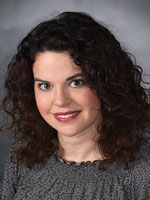Preface
Acknowledgments
About the Author
About the Contributor
1. What Does It Mean to Educate the Whole Child?
Chapter Topics
Introduction: The New Face of Diversity
Collaboration Makes Pioneers of Us All
Dance of Development: The Paradox of Educating Children Who Develop at Different Rates
What Does It Mean to Educate the Whole Child?
What Is Collaboration, and Why Is It Important for Educating the Whole Child?
What Is Developmentally Responsive Practice?
How Do Environment and Health Status Affect Learning and Development?
How Does Social-Emotional Health Affect Learning and Development?
How Does Participation in High-Risk Behavior Affect Learning and Development?
What Is the Family's Role in Promoting the Development of the Whole Child?
An Imperative to Celebrate Our Work
Closing
Summary of Key Points
Key Terms and Phrases
2. What Is a Developmentally Healthy School Environment?
Chapter Topics
Introduction
What Is the Relationship Between Social and Emotional Health and Learning?
What Are the Characteristics of a Developmentally Healthy School Environment?
Ten Strategies That Promote a Developmentally Responsive School Environment
What Models and Initiatives Exist for Creating Developmentally Responsive School Environments?
Closing
Summary of Key Points
Key Terms and Phrases
3. What Laws Promote Collaboration for the Whole-Child Initiative?
Chapter Topics
Introduction
Is the Whole-Child Initiative New?
What Laws Support Professional Collaboration to Educate the Whole Child?
Summary of Key Points
Key Terms and Phrases
4. How Do Schools Create Developmentally Responsive Environments? A Shared Responsibility
Chapter Topic
Introduction
What Are the Typical Roles of School Personnel, and How Can They Be Expanded to Address the Needs of Students?
Closing: Toward a Culture of Collaboration
Summary of Key Points
Key Terms and Phrases
5. How Do Professionals Collaborate to Educate the Whole Child?
Chapter Topics
Introduction
Why Is There a Growing Interest in Collaboration to Address the Developmental Needs of the Whole Child?
How Does Collaboration Lead to Schoolwide Change?
The Many Uses of Collaboration: The Four Action-Dimensions
Is Collaboration a Developmental Process?
Collaboration in the Early Years
Collaboration in the Middle Years
Collaboration in High School Years
Ten Principles for Successful Collaboration and Coordination
Summary of Key Points
Key Terms and Phrases
6. What Is the Role of Community Agencies?
Chapter Topics
Introduction
How Do Coordinated Services Support Developmentally Responsive School Environments?
What Community Agencies Should Be Engaged With Schools?
How Do Schools and Community Agencies Work Together?
How Do Schools and Community Agencies Coordinate for Youth Placed at Risk?
How Is an Interagency Agreement Developed?
What Is the Role of the Local Interagency Planning Council?
Summary of Key Points
Key Terms and Phrases
7. How Does Cultural and Linguistic Diversity Affect Professional Collaboration?
Chapter Topics
Introduction
Who Are Culturally and Linguistically Diverse Students and Families?
What Is Cultural Diversity?
How Does Cultural and Linguistic Diversity Enrich School Environments?
How Does Cultural and Linguistic Diversity Affect Professional Collaboration?
What Strategies Are Effective for Working With CLD Students and Parents?
Eight Principles and Strategies to Strengthen Professional Collaboration in Highly Diverse Schools
Summary of Key Points
Key Terms and Phrases
8. Celebrating Our Work: What Are the Benefits and Positive Impacts of Professional Collaboration
Chapter Topics
Introduction
The Power of Collaboration: Can the Success of Professional Collaboration and Interagency Coordination Be Measured?
Does Professional Collaboration Improve Results for the Whole Child?
How Do We Know That Whole-Child Approaches Impact Studet Learning?
Does Collaboration Promote Student and Family Self-Determination?
Why Is it Important to Celebrate Our Work and Renew Our Commitment?
Closing: A Call to Action
Summary of Key Points
Key Terms and Phrases
References
Index




